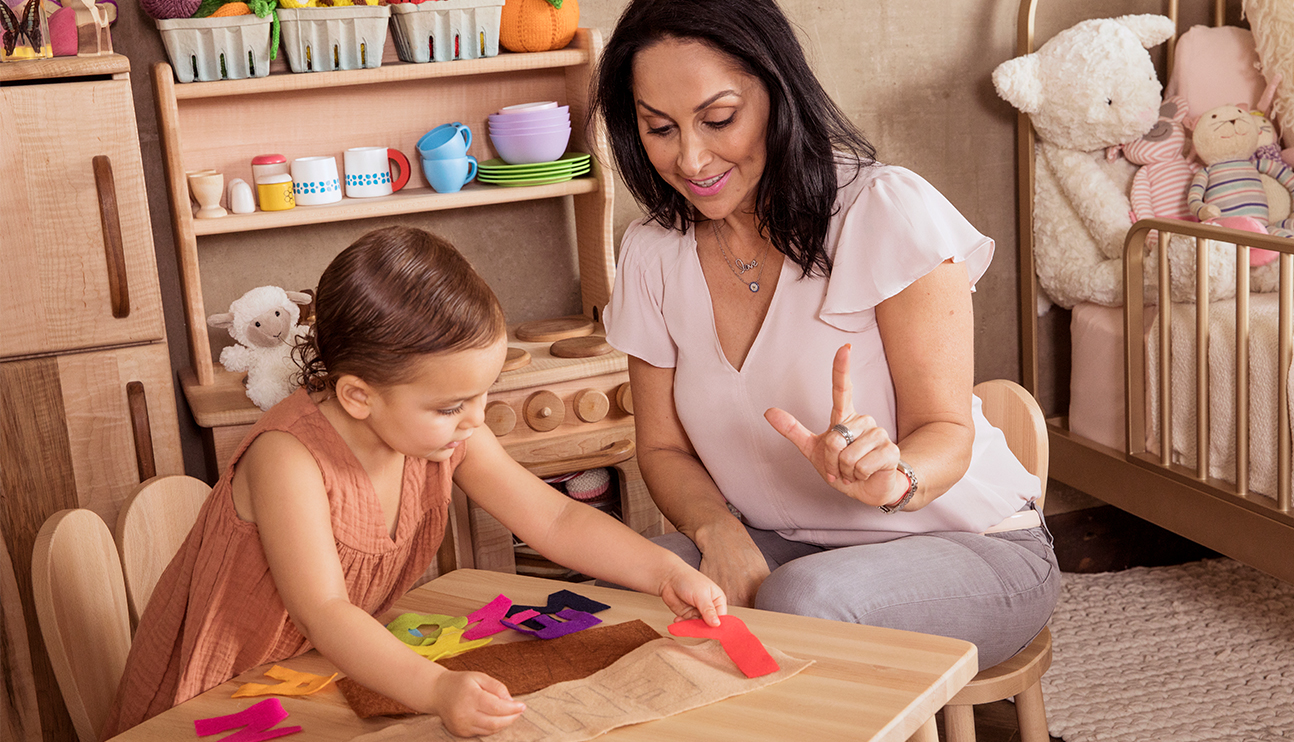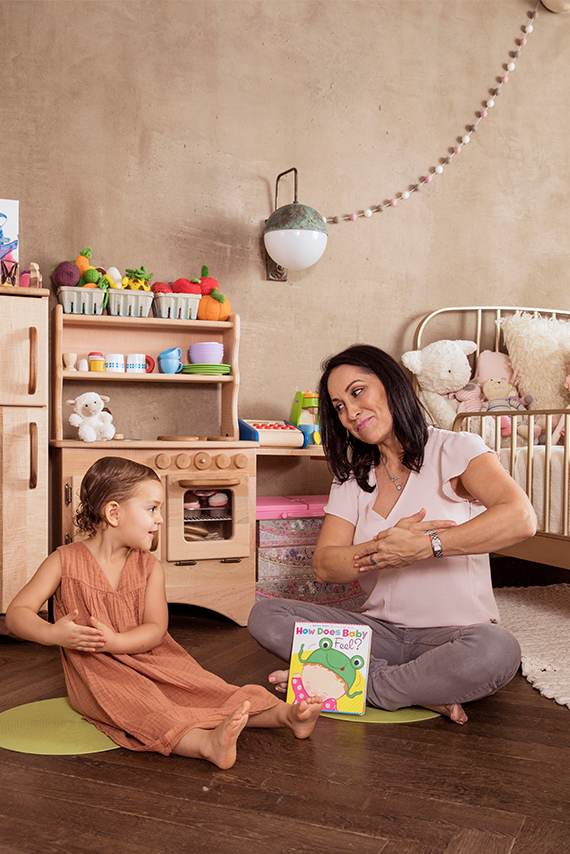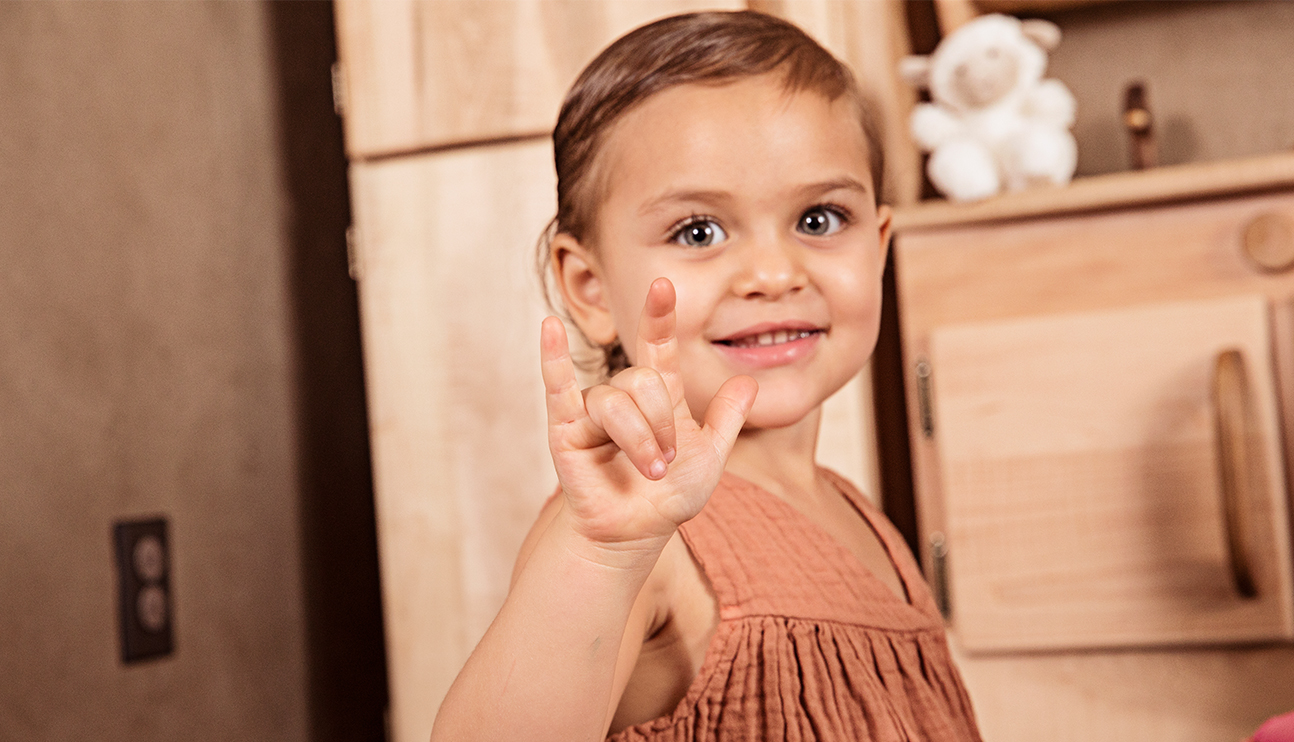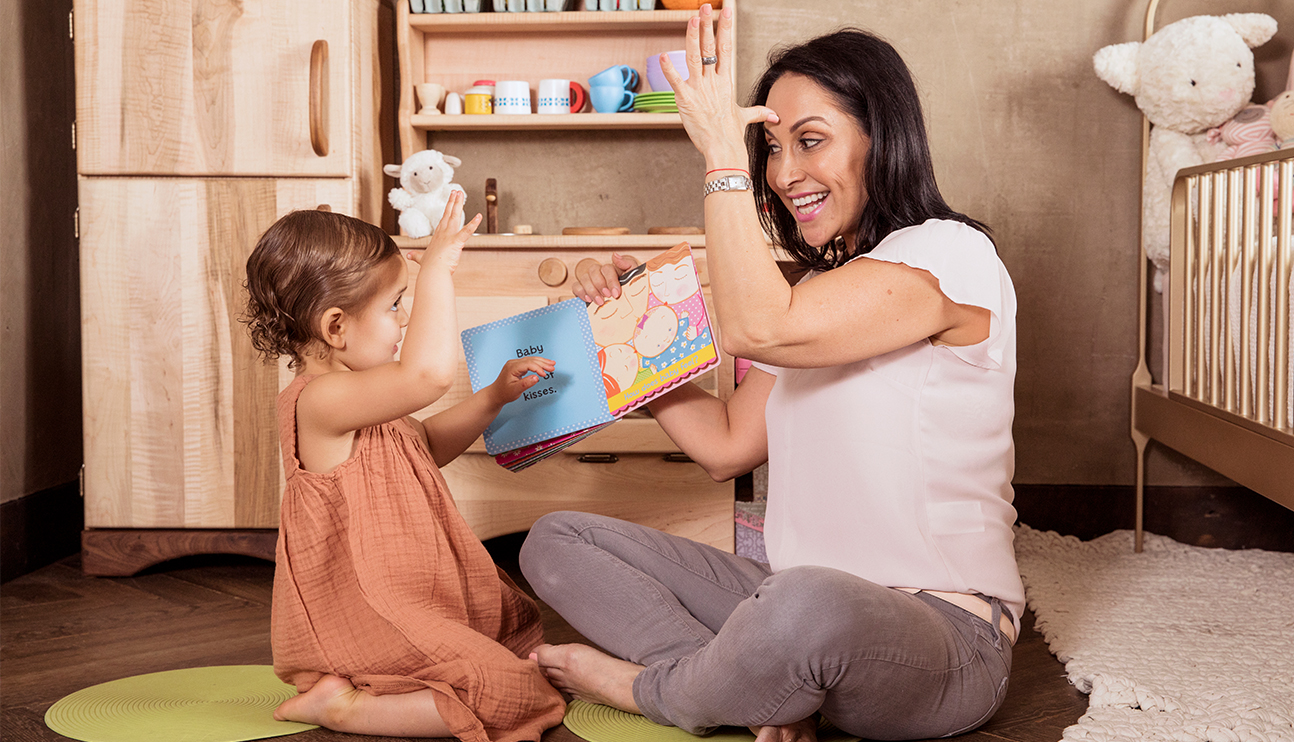Sign Language Series, Part One: Benefits of Sign Language For Babies
Denise Vasi
When you think about how babies and toddlers communicate, some of the first things that come to mind are crying, clapping, waving and pointing. These are all clear indicators that babies and toddlers know what they want to say but don’t necessarily know how to say it. Teaching my child ASL (American Sign Language) was something I considered almost immediately after I found out I was pregnant. I learned ASL back in 2009 when I dated a man who was deaf. The year and a half that followed taught me not only how important communication was but also that communication was so much more than the spoken word. Just like traditional ASL, signing with your baby involves using gestures, a combination of both facial expressions and manual signs with your hands, as well as body language.
If you think any of this is hard — it’s not! I started signing “milk” (opening and closing your fist as if you’re milking a cow) with my daughter when she was a few months old. Within a few short weeks, she was able to look at me and gesture “milk” when she was hungry. She was indeed signing. Giving her the ability to communicate her desire to eat was very powerful.
Sign language is a tool I feel every parent should explore and here’s why.
Benefits of Sign Language
Early communication
One of the best benefits that come from using sign language with your little one is early communication. The motor skills needed to create signs are present before speech skills are well enough developed, making it possible for infants and toddlers to communicate sooner.
According to Etel Leit, MS founder of SignShine, a parenting center based on American Sign Language, “[Babies’] vocal cords are not developed yet. The average age to start speaking is 16-18 months old. Just like crawling and walking, babies develop the muscles in their mouth required for speaking. That’s too long to wait to have a conversation with your child.”
We started weekly classes with Leit when our daughter was about 6 months old. By her first birthday she could sign 12 words (as well as speak 23 words. Sign language will not delay speech!) Signs included, “eat, more, all done, yes, diaper, want, read and hurt,” and I can’t tell you how helpful this was for me as a first-time mother.
Less frustration and fewer tantrums
How many times does a toddler point across a room at something and no one knows what they’re pointing to? The toddler then begs, “Eh! Eh! Eh,” continuously pointing and becoming increasingly frustrated as the adult scurries around trying to figure out what the child needs or wants? Is it the yellow duck, the bouncy ball or the cup of water sitting on the table?
What if that same toddler was able to simply sign “duck?” How much easier, on both child and adult, would that situation be?
When you think about it, it totally makes sense. Many tantrums, especially near or during that “terrible-twos” phase are derived from a toddler’s inability to effectively communicate their needs and wants. Teaching them sign language is a tool the entire family can use to minimize frustration and stress.
“Babies and toddlers who do not sign express themselves by crying, pointing, and sometimes screaming,” says Leit, “Children who do sign are more articulate because they express exactly what they want, see or need.”

Larger vocabulary, better spelling skills, accelerated literacy and higher IQ
As a one-year-old, our daughter could recognize and name most letters of the alphabet. At 16 months, and I’ll never forget it, I was cooking over the stove and she was at my feet. She read the letters “W-O-L-F” (the appliance brand) off the bottom of my oven. By 18 months, she could spell her 2-word, 8-letter name. I could go on and on.
Children who have been taught to use sign language have a larger vocabulary and have better spelling skills. When you’re signing with your child, you are exposing them to spelling and letters on a regular basis.
Dr. Marilyn Daniels, one of the most prolific researchers in the field of sign language, found that simultaneously representing words visually — with fingerspelling and signing, and orally — speaking the words, enhanced a child’s vocabulary development.
The brain is divided into two hemispheres; the right side of the brain is in charge of visuals skills, taking in information with the eyes, and the left side of the brain is in charge of storing language. Children who sign are more likely to remember what is being taught because sign language prompts them to use both sides of their brain. Other research proves that this exercise of duality leads babies that sign to an average IQ level 12 points higher than babies who do not sign.
Other benefits
Three years later, sign language continues to come in handy in practical ways every day. For example, when I’m standing outside of ballet class and want to ask my daughter if she needs to take a potty break. Rather than interrupt her entire class, I just sign “toilet?” through the looking glass and she can sign “yes “ or “no.”
Or when I see she isn’t focused on what she’s doing at the moment, a quick sign will remind her to “focus” without having to call her out in front of her peers.
Thanks to sign language, I’ve learned to read my daughter’s non-verbal communication extremely well. My husband will tell you, I can foresee her reaction to something even before it all goes down. I’m rarely surprised.
All of that said, the most meaningful benefit of all is truthfully the connection forged between us. Before she runs into class, I’ll sign “I love you” to her and I still melt every time she signs it back.
Read Part Two: Emotional Intelligence and Literacy Skills here.
Etel Leit, MS is the founder of SignShine, a parenting center based in LA that offers communication consultations, classes and workshops based on American Sign Language (ASL).
If you’re interested in baby signing, you can take SignShine Online Video Lessons from anywhere in the world or download the SignShine app which has favorite children’s songs and rhymes with signs.
*Editor’s Note: this post was originally published in December 2018 and has been revamped and updated for accuracy and comprehensiveness.








